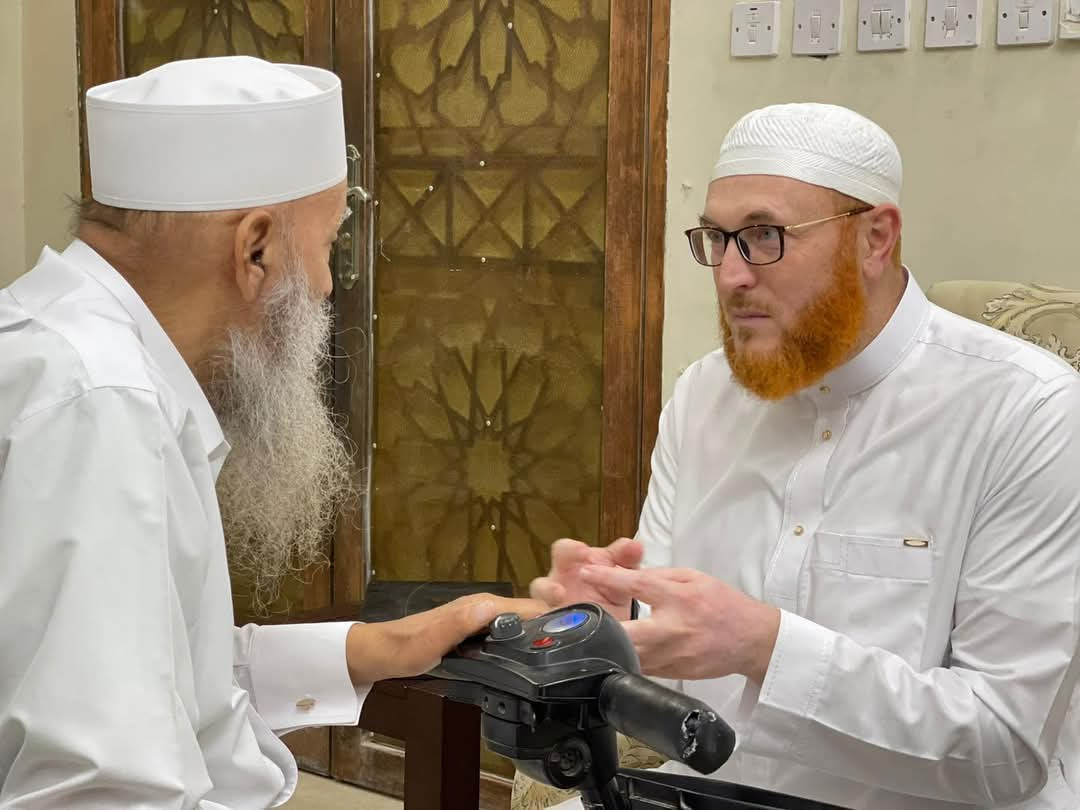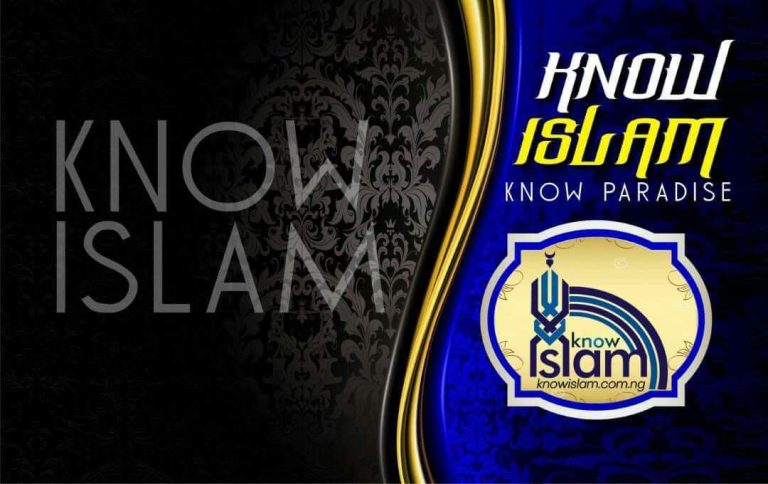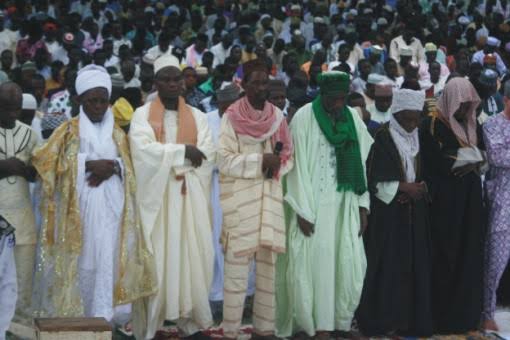Biography of Sheikh Abu Ishaq al-Huwayni By Dr. Muhammad Salah
The Sheikh was born into a simple rural family that knew nothing but farming. They were neither…
The Sheikh was born into a simple rural family that knew nothing but farming. They were neither poor nor wealthy but were of moderate means, enjoying status and respect in the village due to their good treatment of people and the well-known good character of his father.
His Name and Birth:
He is: Abu Ishaq Hijazi ibn Muhammad ibn Yusuf ibn Sharif al-Huwayni al-Masri. (“Ishaq” is not his son’s name, but rather a kunyah the Sheikh adopted in honour of the kunyah of the Companion Sa’d ibn Abi Waqqas (رضي الله عنه) and that of Imam Abu Ishaq al-Shatibi (رحمه الله).)
He was born on Thursday, 1st Dhul-Qa’dah 1375 AH, corresponding to June 1956, in the village of Huwayn, located in the Riyadh district of Kafr El-Sheikh governorate, Egypt.
His Family:
The Sheikh was born into a simple rural family that knew nothing but farming. They were neither poor nor wealthy but were of moderate means, enjoying status and respect in the village due to their good treatment of people and the well-known good character of his father. His father was married to three wives, and the Sheikh was the youngest son of the last wife. He was the middle of five male siblings.
His father was naturally religious—like most villagers at the time—and loved the deen. It is mentioned that cotton theft was common in those days. Once, while walking near his field, the Sheikh’s father saw someone stealing from his crop. Instead of confronting him, he hid so the man wouldn’t see him, ensuring he wouldn’t startle or frighten him while he took what he wanted and left.
The Sheikh’s father never visited a doctor in his life except when he was terminally ill, and even then, he was forced to go. He passed away on Tuesday, 28th February 1972 (رحمه الله).
His Formal Education:
The Sheikh was enrolled in a government primary school (non-Azhari) in a neighbouring village called Al-Wazariyah, about 2 km from Huwayn, where he studied for six years. He then moved to Kafr El-Sheikh city for his preparatory education at Al-Shaheed Hamdi Preparatory School, which was a 15-minute car ride from his village. In his first year there, he began writing poetry.
For his secondary education, he enrolled in the science stream at Al-Shaheed Riyad Secondary School. Due to the long commute, he and his siblings rented a flat in the city, staying there during the week. Their mother (حفظها الله) would prepare their provisions, and their eldest brother would give them half a pound each week.
After completing secondary school, there was a debate about which university faculty he should join. He considered different options before deciding on the Spanish language department at the Faculty of Al-Alsun, Ain Shams University, Cairo. His choice of Spanish was strategic, as he aimed to be on equal footing with other students and eventually surpass them.
Throughout his first three years, he was among the top three students in his class. However, in his final year, his ranking dropped slightly. He graduated with distinction and aspired to become a member of the Spanish Language Academy. He even travelled to Spain on a university scholarship, but he returned because he did not like the country.
His Journey in Islamic Knowledge:
During his early years in the village and city (before university), neither he nor those around him had much concern for Islamic knowledge beyond basic acts of worship like prayer. However, at the end of his final year of secondary school (1395 AH / 1974–1975 CE), he travelled to Cairo to study with his brother.
He began attending Friday khutbahs delivered by Sheikh Abdul Hamid Kishk (رحمه الله) at Ain Al-Hayat Mosque. One day, after Jumu’ah, he saw a book being sold on the pavement—Sheikh Al-Albani’s (رحمه الله) book “The Prophet’s Prayer Described from Takbeer to Tasleem as If You See It.” He browsed through it but found it expensive (15 qirsh), so he left it. Later, he found a summary of the book and purchased it.
Upon reading it, he realised that many things people did in prayer—including himself—were incorrect and went against the authentic Sunnah. Determined to buy the full version, he did so and was deeply impressed by Sheikh Al-Albani’s writing style, especially the introduction. This introduction set him on the path of following the correct methodology—the path of the Salaf. It explained the obligation of adhering to the Sunnah and rejecting anything that contradicts it, including statements from the great Imams who disavowed opposing the Sunnah both in their lifetimes and after their deaths.
The book’s footnotes caught his attention, despite his complete lack of knowledge of technical terms at the time. He even admitted that, for a period, he mistakenly thought Al-Bukhari was a Sahabi because he often saw people saying “رضي الله عنه” after his name!
This experience sparked his determination to study Hadith sciences.
As he entered university, he actively searched for more books on Hadith. The first book he found was “Al-Fawa’id Al-Majmoo’ah fi Al-Ahadith Al-Mawdoo’ah” by Imam Al-Shawkani. He was shocked by what he discovered—many commonly cited ahadith were actually fabricated.
This new found knowledge affected how he listened to Sheikh Abdul Hamid Kishk’s sermons, as he now doubted many of the ahadith being quoted. One day, during a Friday khutbah, Sheikh Kishk mentioned a hadith that he doubted. Upon research, he found that Ibn Al-Qayyim (رحمه الله) had declared it weak.
He approached Sheikh Kishk after the khutbah and informed him of this. However, the Sheikh dismissed it, saying that Ibn Al-Qayyim had made a mistake. He then advised him:
“O my son! Learn before you object.”
The Sheikh later described how this rebuke humbled him, saying, “I walked away feeling humiliated, as if I had been pecked by a rooster!” But this encounter ignited a strong desire in him to study Hadith and Islamic sciences properly.
Determined to find a teacher, he asked everyone he knew if there was a scholar who could teach him Hadith. He was eventually directed to Sheikh Muhammad Najib Al-Muti’i (رحمه الله).
He continued searching for more books and found the first 100 ahadith from “Silsilat Al-Ahadith Al-Da’ifah wal-Mawdoo’ah wa Atharuha As-Sayyi’ fil-Ummah” by Sheikh Al-Albani (رحمه الله). He noticed that the Sheikh categorised ahadith differently—some were “Munkar,” others “Da’if,” some “Batil.”
Curious about these terms, he began researching their meanings and differentiations. He sought clarification from Sheikh Al-Muti’i, who referred him to a book titled “Under the Banner of the Sunnah: Simplifying the Sciences of Hadith.”
This book introduced him to the main collections of Hadith, their authors, and the technical terminology used in the field.
He later said:
“I spent about two years with Sheikh Al-Albani’s book, and they were among the most beneficial years in my learning.”
His Struggles in Seeking Knowledge:
During his university years, he worked during the day in a grocery shop in Nasr City, Cairo, to support himself while studying Hadith at night. This left him with as little as three hours of sleep per day!
Due to financial difficulties, he couldn’t always afford books. He would visit Al-Mutanabbi Bookstore just to touch and smell the books before quickly leaving to avoid suspicion!
At times, he would even hand-copy sections of books because he couldn’t afford to buy them.
Scholars He Studied Under
The Sheikh attended the lessons of Sheikh al-Muti‘i at the Malaysian Students’ House near ‘Abduh Basha Square in Al-‘Abbasiya, where he studied the explanations of:
Sahih al-Bukhari
Al-Majmu‘ by Imam al-Nawawi
Al-Ashbah wa al-Naza’ir by Imam al-Suyuti
Ihya’ ‘Ulum al-Din by Imam Abu Hamid al-Ghazali – may Allah have mercy on them all.
The Sheikh remained with Sheikh al-Muti‘i for about four years until his lessons were halted due to the mass arrests ordered by President Anwar al-Sadat. As a result, Sheikh al-Muti‘i migrated to Sudan and later to Madinah, where he passed away and was buried in al-Baqi‘ – may Allah have mercy on him.
He also studied under Sheikh Sayyid Sabiq – may Allah have mercy on him – in Al-Ma‘adi.
Additionally, he attended lessons with some scholars in the columns (shu-yukh al-‘amida) of Al-Azhar Mosque, studying Usul al-Fiqh, Arabic language, and Qira’at, but not extensively.
He learned part of the Warsh recitation from his maternal uncle, who was a teacher of Qira’at.
Meeting Sheikh al-Albani
In 1396 AH, Sheikh al-Albani – may Allah have mercy on him – visited Egypt and gave a lecture at the headquarters of Jama‘at Ansar al-Sunnah al-Muhammadiyyah in ‘Abidin. However, the Sheikh did not have the opportunity to meet him at that time.
During this period, the Sheikh had published his book Fasl al-Khitab fi Naqd al-Mughni ‘an al-Hifz wa al-Kitab. Sheikh al-Albani, who used to say that he had no students (meaning none who followed his exact methodology in hadith authentication and criticism), remarked after reading the book: “Yes” (indicating that this author was indeed a student of his methodology).
In early Muharram of 1407 AH, the Sheikh traveled to Jordan to meet Sheikh al-Albani. He stayed with him for about a month, which he described as some of the best days of his life.
He met Sheikh al-Albani again in 1410 AH during Hajj in the sacred lands. That was the Sheikh’s first Hajj and the last Hajj of Sheikh al-Albani – may Allah have mercy on him – and it was the last time he saw him.
Thus, the Sheikh met Sheikh al-Albani only twice. He recorded their discussions and questions on cassette tapes, later published under the title Masa’il Abi Ishaq al-Huwayni. Additionally, he had a few telephone conversations with him and gained knowledge from Sheikh al-Albani’s books and recorded lectures.
Studies in Saudi Arabia
The Sheikh traveled to Saudi Arabia and studied under:
Sheikh Abdullah ibn Qa‘ud – may Allah have mercy on him: He attended some of his lessons on Al-Kafiyah fi al-Jadal by Imam al-Juwayni, which at that time was being read to him by Sheikh Salih Al al-Sheikh – may Allah preserve him.
Sheikh ‘Abdul Aziz ibn Baz – may Allah have mercy on him: He attended some of his lessons at his mosque (Al-Masjid Al-Kabir) on:
Sunan al-Nasa’i
Majmu‘ al-Fatawa by Ibn Taymiyyah
Kitab al-Tawhid by Imam Muhammad ibn ‘Abdul Wahhab – may Allah have mercy on them all.
Sheikh Ibn ‘Uthaymeen – may Allah have mercy on him: He met him in the Haram, entered his private room, and asked him about certain matters.
Praise for Him
As mentioned earlier, Sheikh al-Albani described him as his student.
During their meeting in Amman, Sheikh al-Albani told him: “You have attained what others have not.”
In As-Silsilah as-Sahihah (vol. 5, hadith no. 2457), Sheikh al-Albani mentioned:
“Perhaps some of our strong brothers in the field of hadith will undertake this work, such as our brother ‘Ali al-Halabi, Samir al-Zuhairi, and Abu Ishaq al-Huwayni, and others like them. May Allah reward them with goodness.”
May Allah forgive his sins and grant him Jannah. Aameen.





